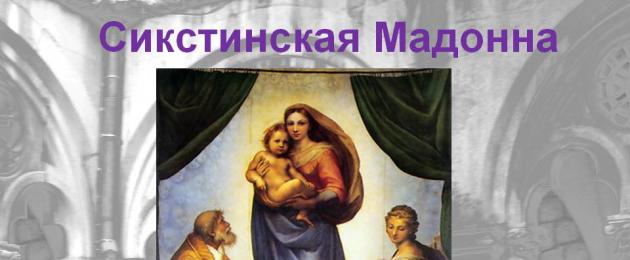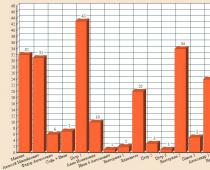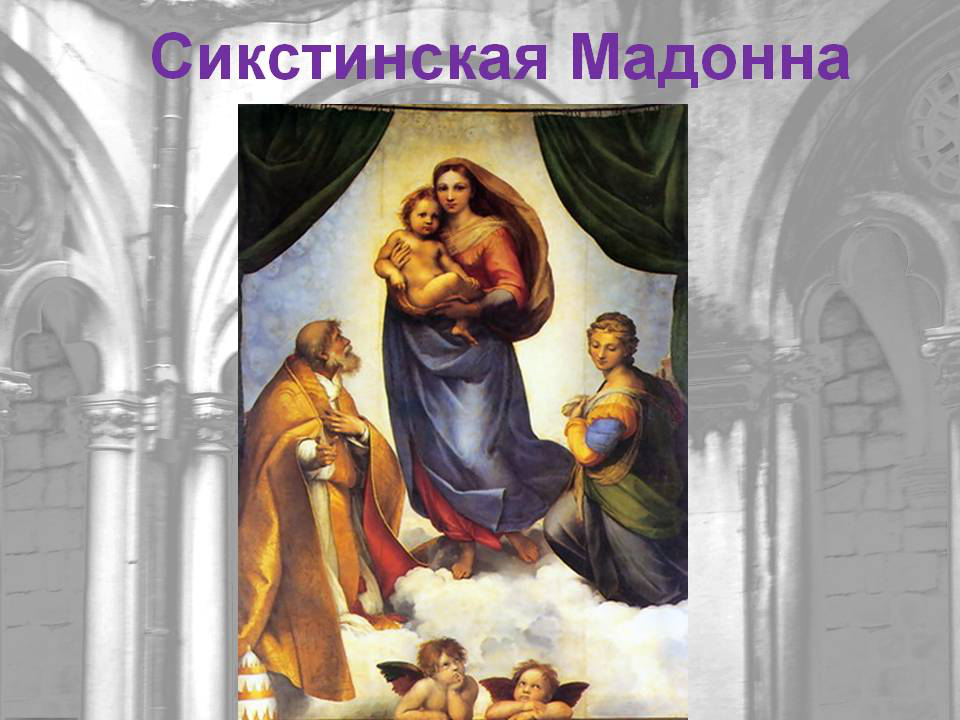
“I remember a wonderful moment:
1:569You appeared before me
1:615Like a fleeting vision
1:662Like a genius of pure beauty…”
1:726 1:736We all remember these lines from school years. At school we were told that Pushkin dedicated this poem to Anna Kern. But it's not. According to Pushkin scholars, Anna Petrovna Kern was not a "genius of pure beauty", but was known as a woman of very "free" behavior. She stole a famous poem from Pushkin, literally tearing it out of his hands. Who did Pushkin write about then, whom did he call “the genius of pure beauty”?
1:15011:9
Now it is known that the words "genius of pure beauty" belong to the Russian poet Vasily Zhukovsky , who in 1821 in the Dresden Gallery admired the painting by Raphael Santi "The Sistine Madonna".
1:394 1:404Here is how Zhukovsky conveyed his impressions: “The hour that I spent in front of this Madonna belongs to the happy hours of life ... Everything was quiet around me; first, with some effort, he entered himself; then he clearly began to feel that the soul was expanding; some touching feeling of grandeur entered into her; the indescribable was depicted for her, and she was where only in the best moments of her life could be. The genius of pure beauty was with her.”
1:1234 1:1244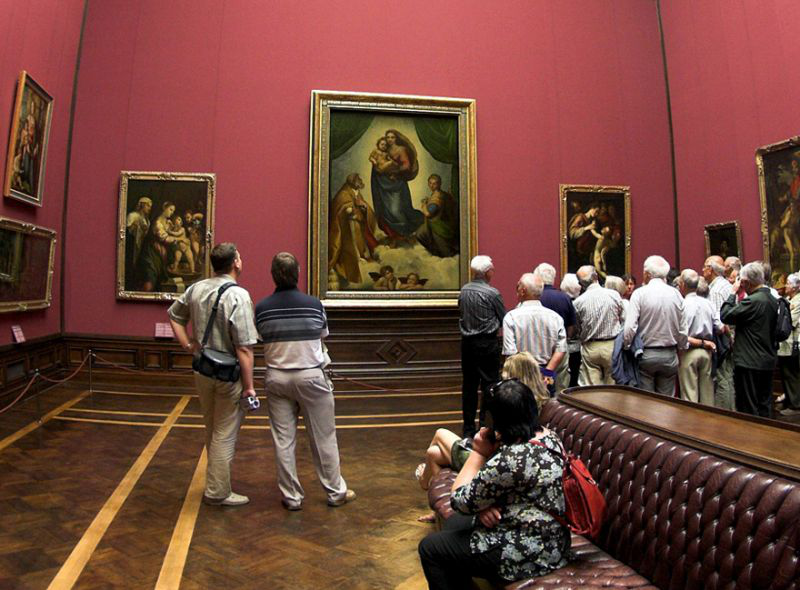
2:9
The painting "Sistine Madonna" was painted by Raphael in 1512-1513, commissioned by Pope Julius II for the altar of the church of the monastery of Saint Sixtus in Piacenza, where the relics of Saint Sixtus and Saint Barbara were kept.
2:391 2:401In the picture, Pope Sixtus II, who was martyred in 258 AD. and numbered among the saints, asks Mary for intercession for all who pray to her in front of the altar. The posture of Saint Barbara, her face and downcast eyes express humility and reverence.
2:856 2:866According to ancient legends, Pope Julius II had a vision of the Mother of God with the Child. Through the efforts of Raphael, it turned into the appearance of the Virgin Mary to people. The main question is: is this work a painting? Or is it an icon? Raphael sought to transform the human into the divine, and the earthly into the eternal.
2:1417 2:1427Raphael wrote the “Sistine Madonna” at a time when he himself was experiencing severe grief. And so he put all his sadness into the divine face of his Madonna. He created the most beautiful image of the Mother of God, combining in it the features of humanity with the highest religious ideality. The image of a woman with a baby captured by Raphael entered the history of painting forever as something tender, virginal and pure.
2:21562:9
However, in real life, the woman depicted as the Madonna was far from an angel. Moreover, she was considered one of the most depraved women of her era. If the priests knew that Raphael painted the Madonna from his mistress, then it is unlikely that she could stand behind the altar image in the monastery of St. Sixtus, for which this work was commissioned to the artist.
2:642 2:652 3:1157 3:1167This picture is not just a figment of fantasy or fiction of the painter. Each detail has a special meaning and history, which was explored only recently. Not so long ago, scientists took a closer look and saw that Raphael, in the main characters of the picture, the Madonna with little Jesus, encoded the first letter of his name.
3:17363:9
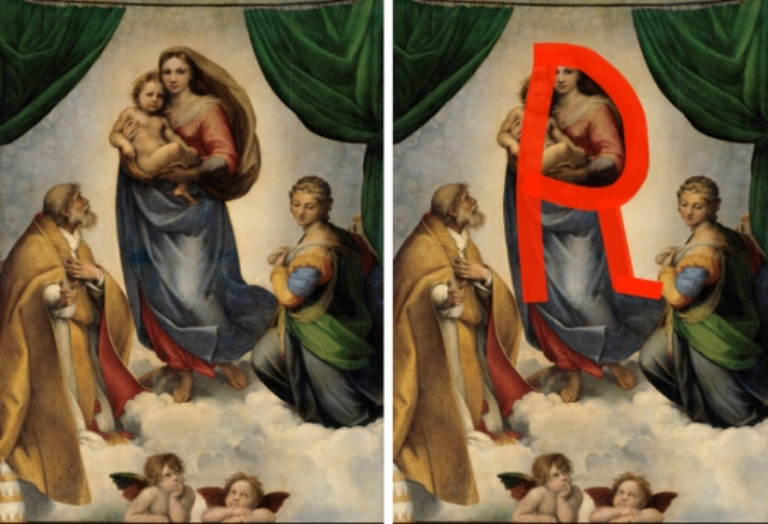
Many masters did this both during the time of the painter and after him. But in addition, interesting stories are hidden in the details. According to the researchers of the famous painting, the main characters, of which there are 9, form a hexagon and these details deserve special attention.
4:1004 4:1014The painter was a Gnostic - an adherent of the late antique religious movement, based on the Old Testament, Eastern mythology and a number of early Christian teachings.
4:1323 4:1333Of all the magic numbers, the Gnostics especially revered the six (It was on the sixth day, according to their teaching, that God created Jesus), and Sixtus is translated as “the sixth.” Raphael decided to play with this coincidence. Therefore, compositionally, the picture, according to the Italian art critic Matteo Fizzi, encrypts a six in itself: it is made up of six figures that together form a hexagon.
4:20324:9
5:514
1. MADONNA
Some researchers believe that Raphael wrote the image of the Blessed Virgin from his mistress Margherita Luti. Whether this is really so is difficult to say now, but many artists depict the faces of their women on canvases. They were a kind of models, who were always at hand and, moreover, inspired the master. According to the Russian art historian Sergei Stam, “in the eyes of the Sistine Madonna, immediate openness and gullibility, ardent love and tenderness, and at the same time alertness and anxiety, indignation and horror at human sins froze; indecision and at the same time willingness to perform a feat (to give his son to death).
5:1745
2. CHILD CHRIST
It is difficult to say whether the prototype of the son of the Lord was a real child, but if you look closely, you will see that his eyes are quite adult, moreover, in the eyes of a baby, Rafael portrayed the child’s understanding, even at that age, of his fate and her role for all of humanity . According to Stam, “His forehead is not childishly high, and his eyes are completely unchildishly serious. However, in their eyes we do not see any edification, or forgiveness, or reconciling consolation ... His eyes look at the world that has opened before them intently, intensely, with bewilderment and fear. And at the same time, in the look of Christ one can read the determination to follow the will of God the Father, the determination to sacrifice oneself for the sake of the salvation of mankind.
5:1327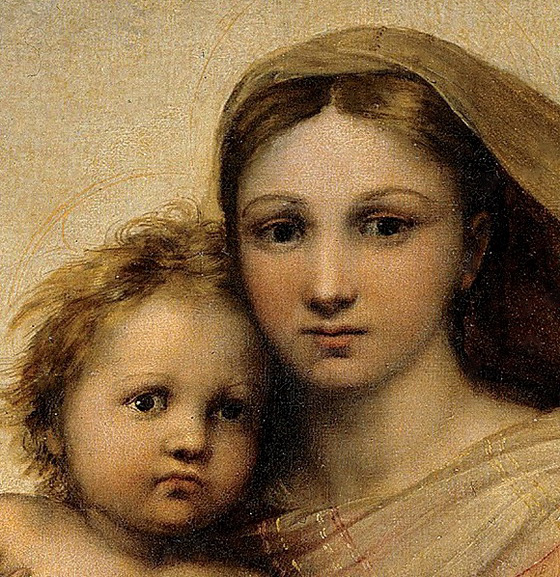
3. SIXT II
Very little is known about the Roman pontiff. He did not stay on the holy throne for long - from 257 to 258 - and was executed under the emperor Valerian by beheading. Saint Sixtus was the patron of the Italian papal family Rovere (Italian "oak"). Therefore, acorns and oak leaves are embroidered on his golden robe.
6:591
4. HANDS OF SIXSTA
Raphael wrote the holy pope pointing with his right hand at the crucifixion on the throne (recall that the "Sistine Madonna" hung behind the altar and, accordingly, behind the altar cross). It is curious that the artist depicted six fingers on the pontiff's hand - another six, encrypted in the picture.
6:1164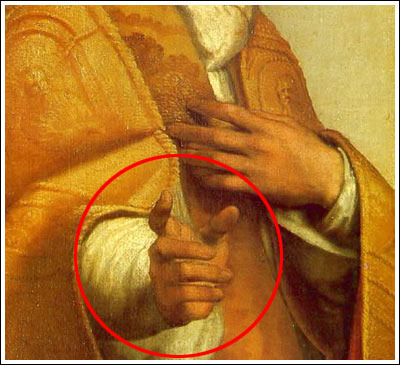
Although other researchers refute this theory: what many take for the sixth finger, in their opinion, is the inside of the palm. When you look at a reproduction in low resolution, you may get such an impression. The high priest's left hand is pressed to his chest - as a sign of devotion to the Virgin Mary.
7:558
5. PAPA TIARA
7:606
The tiara is taken from the head of the pontiff as a sign of reverence for the Madonna. The tiara consists of three crowns, symbolizing the realm of the Father, the Son and the Holy Spirit. It is crowned with an acorn - the heraldic symbol of the Rovere family.
7:967
6. SAINT BARBARA
Saint Barbara was the patroness of Piacenza. This 3rd-century saint, secretly from her pagan father, converted to faith in Jesus. The father tortured and beheaded the apostate daughter.
7:1301
7. CLOUDS
Some believe that Raphael depicted the clouds as singing angels. In fact, according to the teachings of the Gnostics, these are not angels, but unborn souls who are in heaven and glorify the Almighty.
7:1688
8. ANGELS
The two angels at the bottom of the picture look impassively into the distance. Their apparent indifference is a symbol of acceptance of the inevitability of divine providence: the cross is destined for Christ, and he cannot change his fate.
7:374
9. OPEN CURTAIN
The curtain symbolizes the open skies. Its green color indicates the mercy of God the Father, who sent his son to death in order to save people.
7:693 7:703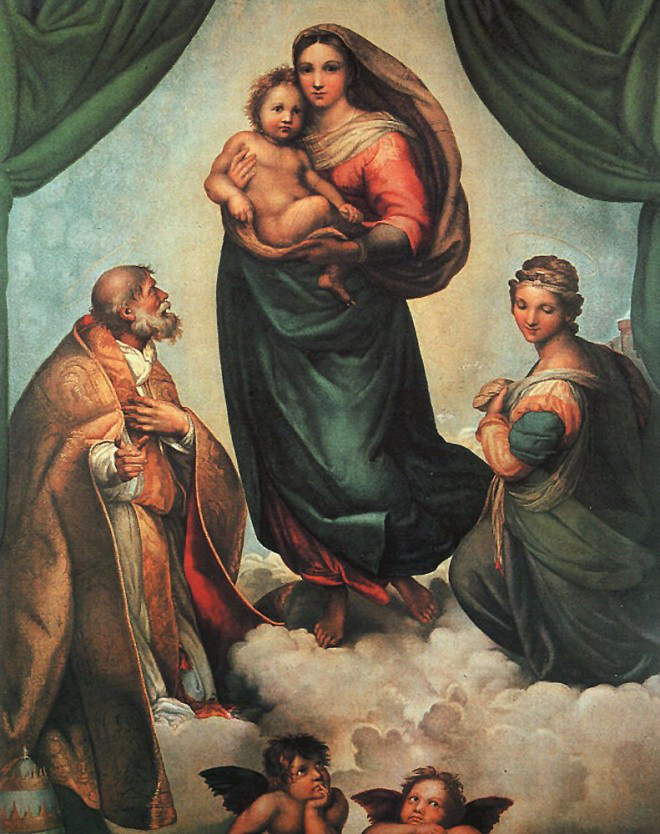
Work on the "Madonna" was completed in 1513, and until 1754 the painting was in the monastery of St. Sixtus, until it was bought by the Saxon Elector August III for 20,000 sequins (almost 70 kilograms of gold).
8:15868:9
Before the start of World War II, the Sistine Madonna was in a gallery in Dresden.
8:169 8:179But in 1943, the Nazis hid the painting in an adit, where, after a long search it was discovered by Soviet soldiers . So the creation of Raphael came to the USSR.
8:445 8:455In 1955, the Sistine Madonna, along with many other paintings taken from Germany, was returned to the authorities of the GDR and is now in the Dresden Gallery.
8:774ARTIST Rafael Santi 8:838
1483 - Born in Urbino in the family of an artist.
1500 - Began training in the art workshop of Pietro Perugino. Signed the first contract - for the creation of the altar image "Coronation of St. Nicholas of Tolentino.
1504-1508 - Lived in Florence, where he met Leonardo da Vinci and Michelangelo. He created the first Madonnas - "Madonna of Granduk" and "Madonna with a Goldfinch".
1508-1514 - Worked on the murals of the papal palace (frescoes "The School of Athens", "Bringing the Apostle Peter out of the dungeon", etc.), painted a portrait of Pope Julius II. Received the position of scribe of papal decrees.
1512-1514 - He painted the "Sistine Madonna" and "Madonna di Foligno".
1515 - Appointed chief curator of antiquities of the Vatican. Wrote Madonna in the Chair.
1520 - Died in Rome.
- In contact with 0
- Google+ 0
- OK 0
- Facebook 0

